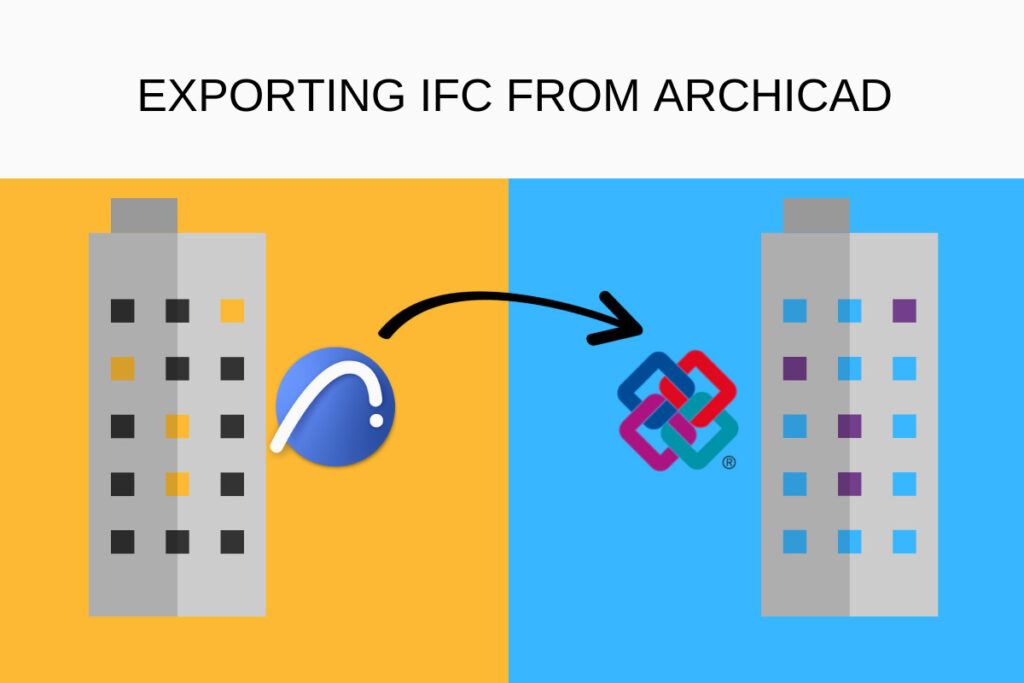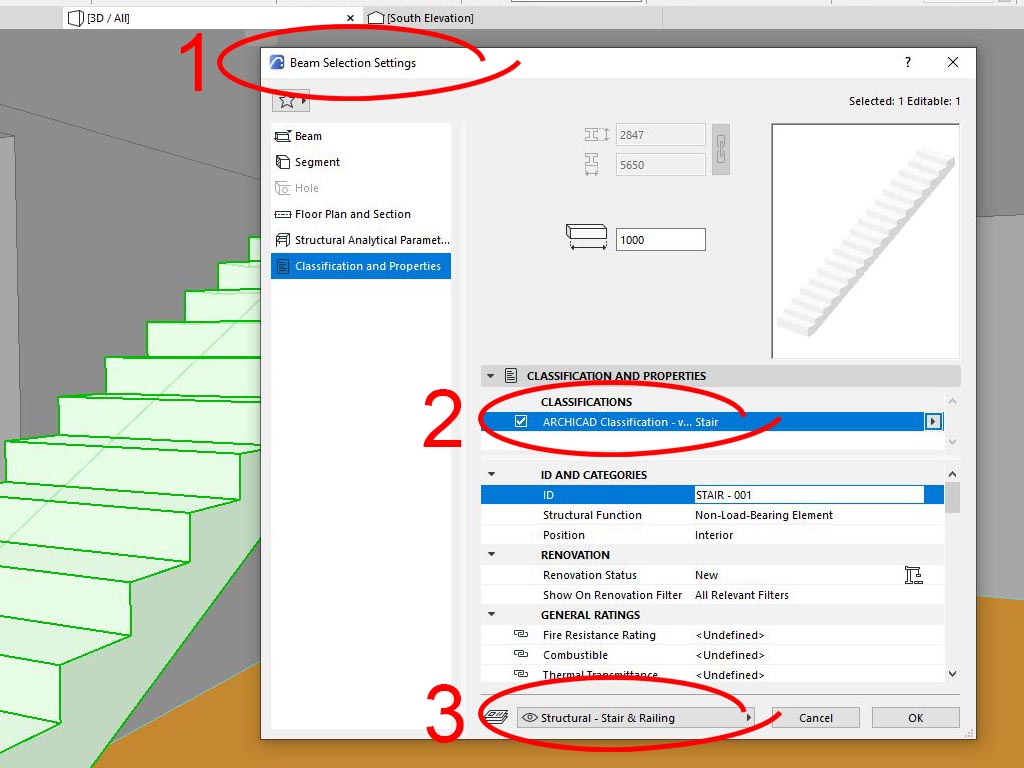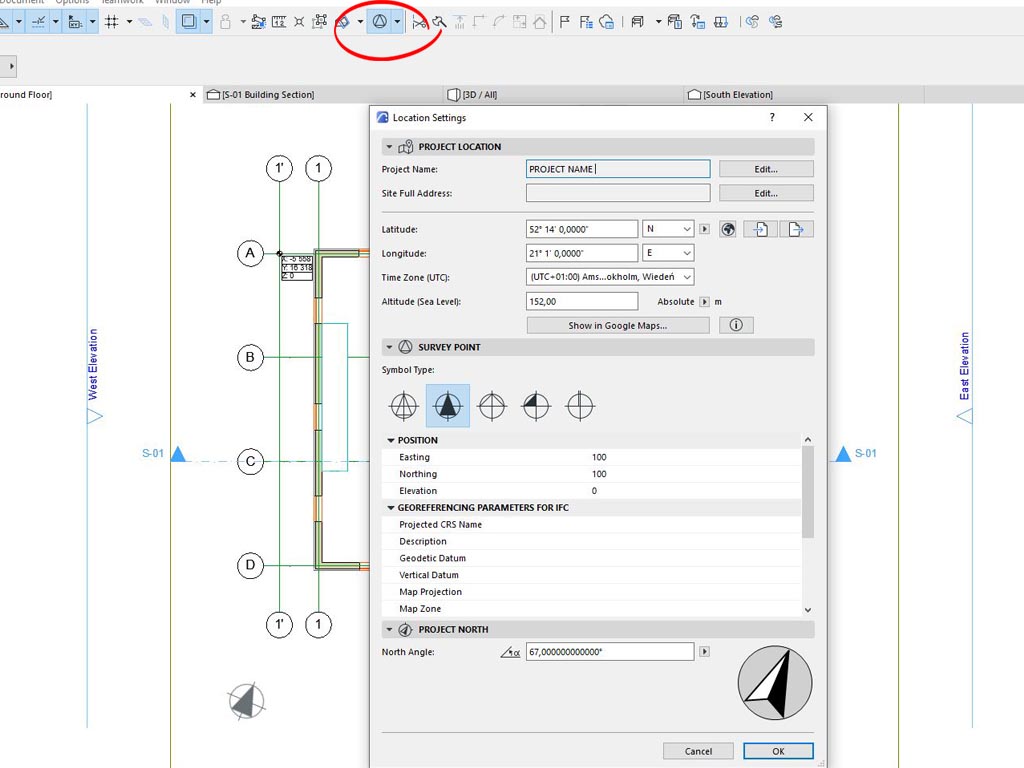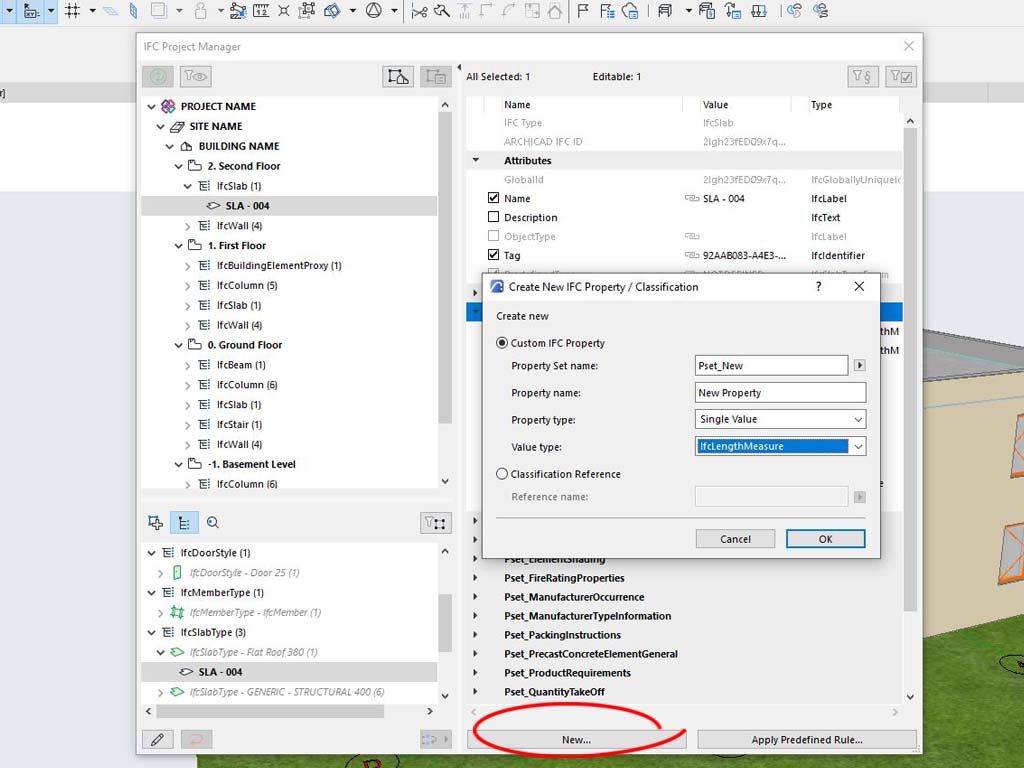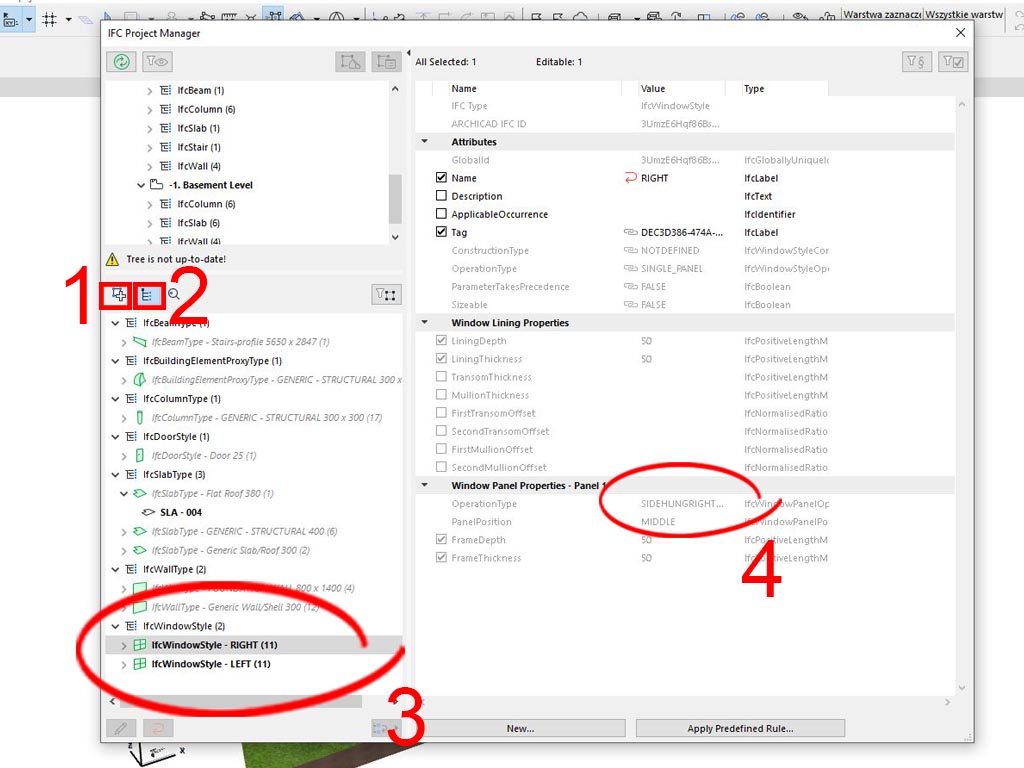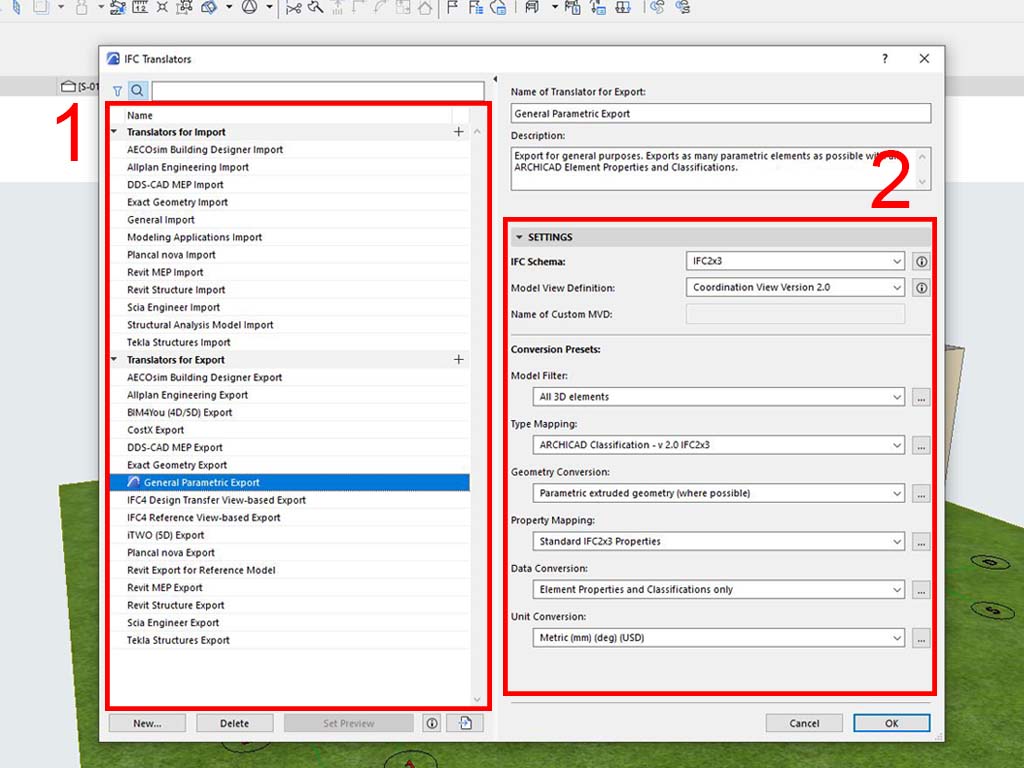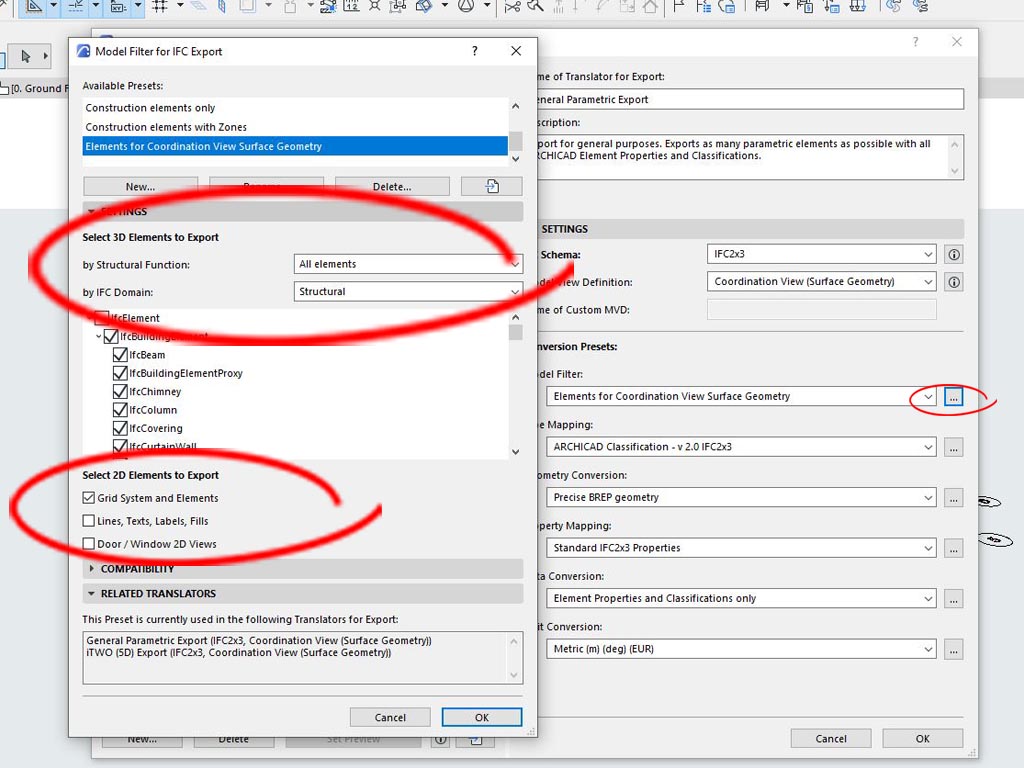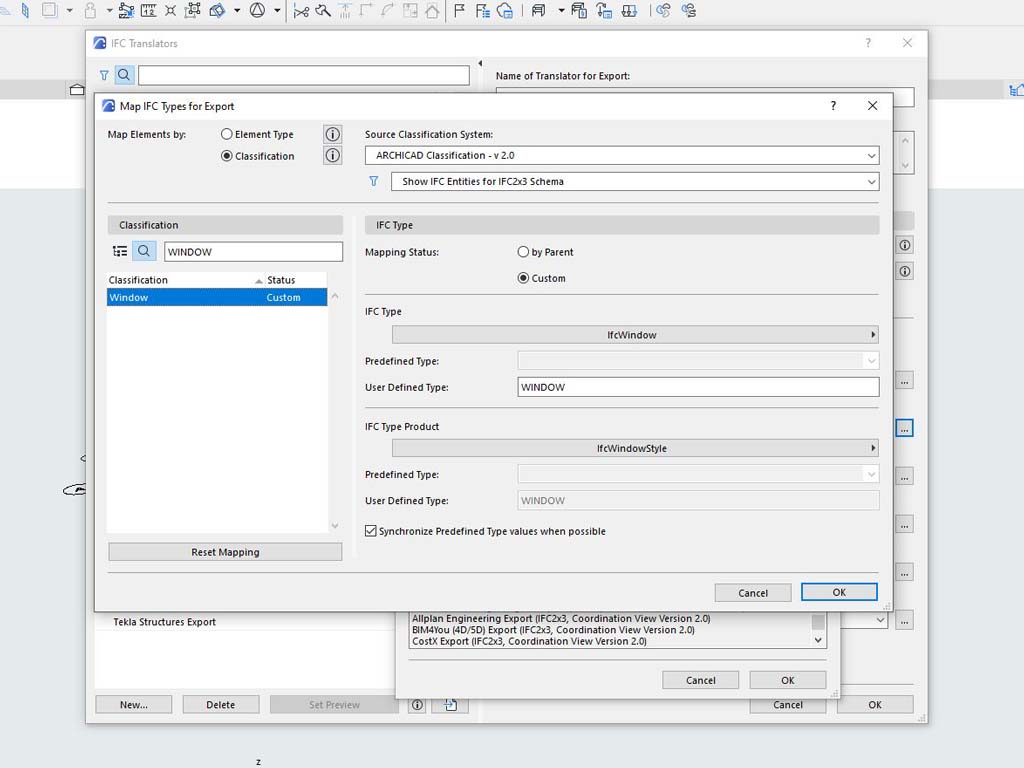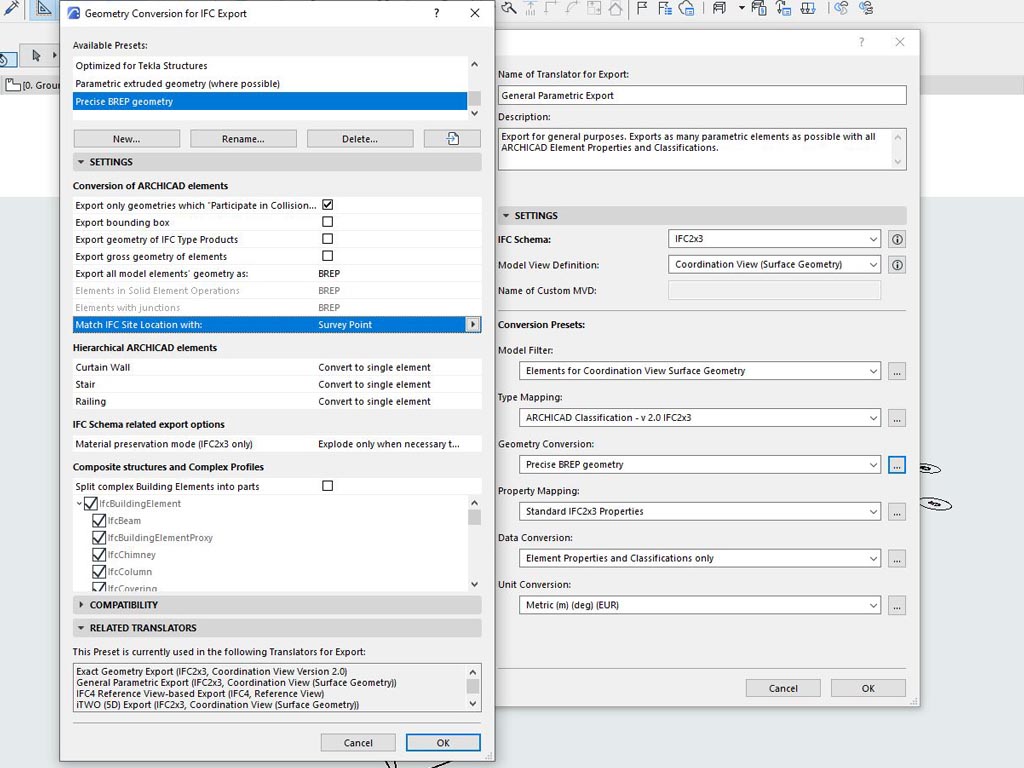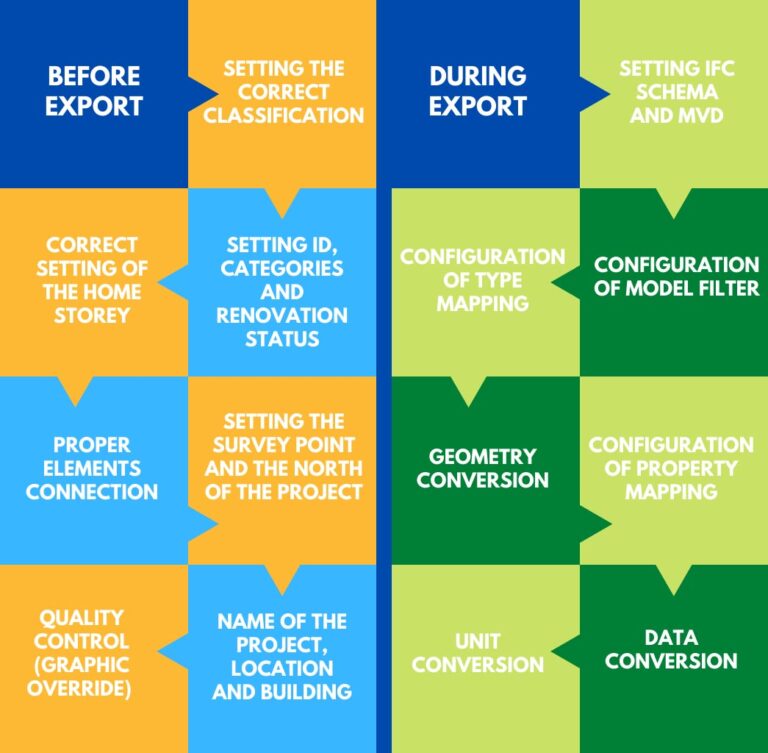Once, during the work on apartment information sheets on one of the housing projects we’ve been working on at the time, the contractor of the investment contacted us and asked for an IFC model that he wanted to use for cost estimation. It was my (and my colleagues) first experience with such an export so with no pre-established standards, no BEP or even a template in ARCHICAD it was a challenge for us. We tried to make the model operational but unfortunately without success… It required too much work with a short deadline. In this guest article I would like to introduce you to the subject of exporting the IFC model from ARCHICAD. You will learn step by step how to do such an export and thanks to this knowledge you will avoid situations that may cause the project to a standstill.
By default ARCHICAD assigns appropriate classification to particular objects depending on the tool they were created with. For example, if you create stairs in a project with the predefined Stairs tool, they will automatically be classified in the ARCHICAD classification as Stairs. Therefore, they will be exported as IfcStairs. If for some reason in the project we created stairs, e.g. with the Beam tool, we should assign them an appropriate classification so that they will be properly exported as IfcStairs. This is crucial because the correct classification of the model elements make the model useful for the people who only use the IFC model.
Set correctly the ID, structural function, position and renovation status for the elements in the project.This is an important point not only in the context of exporting to IFC. It is a basic information about each element in ARCHICAD thanks to which we can for example filter the display of individual model elements.
Note that the ID parameter after exporting to IFC is mapped by default in ARCHICAD as the Name attribute.
It is equally important to correctly define the home storey of individual objects in the model. In the IFC schema the individual elements are related to each other. Relations relate i.a. to the storey and that’s why it is important that the elements are properly related to the storeys after export.
Correct connections between elements are crucial for the IFC model to be useful. When exporting a model to e.g the cost estimator, it will be important that the dimensions of the model match. For example, it is worth making sure that the columns do not penetrate the floor slab.
If the IFC model will be used for coordination it is especially important to establish a geodetic point and true north of the project. Setting the location of the model in relation to the global coordinate system and cardinal directions allows the correct coordination of several IFC models of different disciplines in one file. In ARCHICAD 25 in the top bar you will find the Show Survey Point icon. From the level of this tool we are able to determine the location and north of the project.
After establishing a Survey Point using the Survey Coordinate Object we can check the coordinates of any point in the project.
It is also worth specifying the basic information such as the name of the project, location or building name. All of the data will be visible for other users after export to IFC. If we do not give them specific names they will be generated automatically. For example, a site in our project IfcSite will be named Location. To give unique names to IfcProject.Name, IfcBuilding.Name or IfcSite.Name, go to the Project Info tab.(Project> Info> Project Info).
To be sure that the model has been prepared for export properly do the quality control using Graphic Override. Thanks to this tool we can for example visually check whether all elements have an assigned classification or if they are assigned to the appropriate storeys.
Before we go into the export settings take a look at the IFC Project Manager tab. (File> Interoperability> IFC> IFC Project Manager)
In the manager dialog, at the top left, we can see the hierarchical structure of the IFC model (this is how the model tree will look after the export). At this point we can find, for example, a slab on the +2 level (SLA-004) and see the attributes and IFC properties assigned to it.
Below the hierarchical structure we see three icons. The first two are used to group items And the third one, the magnifier, is used to search for elements based on the IFC ID.
In the Product Type tab we see individual elements in the project grouped by product types (IFC Product Type). In our example we have 2 types of windows (IfcWindowStyle) differing in the direction of opening. From the Assignments window we can create new groups from project elements. After exporting the created groups will be visible in the IFC file.
Now let’s move to the export itself. In ARCHICAD exporting to IFC is carried out using the export translator. The only thing that’s left to do is to configure a translator according to your needs or to use a predefined translator. Let’s start with the correct translation settings. (File> Interoperability> IFC> Translators)
On the left we see built-in import and export translators that are optimized for specific programs for example Tekla. The Create button at the bottom allows us to create a new translator. On the right side we see Translator settings. Here we can modify the settings of existing translators or adjust the settings of our own translators.
Let us assume that we want to export a model of load-bearing structural elements as a reference model for the structure engineer. I will briefly present the settings that I will be using.
First: select the IFC schema. The ARCHICAD selection includes the IFC2x3 schema and the latest version of IFC4.0.
Then: determinate which Model View Definition (MVD) we will use. Depending on the purpose for which the model will be used, we select the appropriate MVD to export the appropriate data and elements. In our case we choose Coordination View (Surface Geometry), because the model will be used as a reference model for the structural engineer
Next, move on to the options of the conversion configuration. Here we have six configurations and each of them is a drop-down bar. We can choose a ready configuration, or by pressing the square icon next to them, edit information according to your needs.
Once we have the translator settings configured, all we need to do is press the magic export button. You can simply export an IFC file from a floor plan or a 3D view by going to File> Save As. Then choose the IFC Schema and translator.
However, it is better to prepare a new Publisher set. This way we can prepare different views for export (e.g. only structural and load-bearing elements) and have defined translators for these views. Thanks to this, after making changes to the model, all you need to do is click the Publish button and the model/ models will export correctly, automatically saving to the previously selected location.
After exporting we can open the model in one of the many free IFC file viewers.



